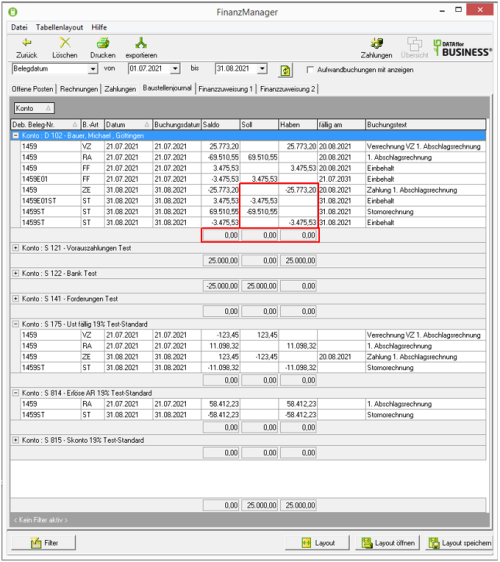Table of Contents
Credit vs. reduction vs. cancellation invoice
Description
Various procedures are available for correcting issued, sent outgoing invoices:
- Credit
- Reduction/invoice amount change
- cancellation invoice.
When and which procedure is to be used is explained below.
| Credit | reduction | cancellation invoice |
|---|---|---|
| A credit initially has no relation to an outgoing invoice that has already been issued, ie it has no purpose. | A reduction (negative change in invoice amount) is the waiver of all or part of the required amount of an issued outgoing invoice, ie it is purpose-oriented. | A cancellation invoice is the reversal of an outgoing invoice that has been issued. |
Credit
A credit initially has no relation to an outgoing invoice that has already been issued, ie it has no purpose.
After the credit is issued, the credit amount can:
a) be settled manually with an outgoing invoice that has already been issued. ⇒ This means that your payment will be received DATAflor BUSINESS the open claim amount of this invoice is reduced.
b) be offset against the claim when creating a subsequent outgoing invoice. ⇒ The required payment amount of the following invoice is reduced.
Application examples:
- After a construction measure has been billed and possibly already paid for, disputes arise about the "general" construction work. A credit note will be issued to the customer. The client is responsible for what the client uses the credited amount for.
- In order to retain customers, a credit note will be issued to the customer after completion and payment of his building project. If a follow-up order is placed with this customer, the credit amount will be offset against the following invoice, thereby reducing the payment amount and benefiting the customer in this way.
in discount invoice chains:
- Use within budget billing chains save Credits, but in principle only reductions and cancellation invoices. With cumulative billing (at the latest with the final bill), you run the risk of having to bill the amount that has already been credited again.
You can find a detailed description of how credits are issued here.
reduction
A reduction (negative change in invoice amount) is the waiver of all or part of the required amount of an issued outgoing invoice, ie it is purpose-oriented.
Application examples:
- An invoice contains the billing for a service that has not yet been provided (= overbilling) and is therefore reduced by the client. The initially shortened service will be billed again after the service has been provided with a subsequent invoice.
- An invoice contains the billing for a service that shows deficiencies and is therefore reduced by the client. The initially shortened service will be billed again after the defect has been remedied with a subsequent invoice.
in discount invoice chains:
- Distinguish between the arbitrary reduction of the invoice amount on the part of the client and the permanent reduction of a billed service within the chain of partial invoices:
- At a arbitrary reduction (e.g. client only pays a flat rate of 80% of the invoice amount) the reduced invoice amount, after receipt of payment and the reduction, is automatically recalculated with the next advance payment, partial final or final invoice through cumulative accounting.
- Should be a billed service permanently shortened In addition to entering the reduction, the origin of the quantity must be changed (e.g. 10 pieces → 8 pieces or a flat rate of €10.000,00 → €8.000,00) so that the reduced invoice amount is not billed again later in the partial billing chain.
You can find a detailed description of how reductions are recorded here.
cancellation invoice
A cancellation invoice is the reversal of an outgoing invoice that has been issued.
Application example:
- An incorrectly issued invoice that has already been sent should be taken back in full. A completely new invoice is then issued. The cancellation invoice for the first invoice must be sent to the client together with the new invoice.
- You can find a detailed description of how cancellation invoices are issued here.
- The function for issuing cancellation invoices is available to users with an accounting interface DATEV 7 and users without Accounting interface available. For all other users, the previous procedure of the Delete with log or at licensed Payment transactions debtors capturing one reduction for the full invoice amount.




